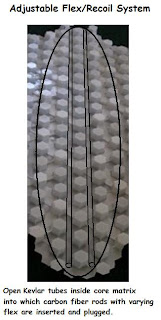
His declaration of this belief caused, he admitted, profound shock to those who knew him only as a sceptic. Perhaps this helps explain the belief in God that he came to in later life.

Along the way, he also came to love magic-not spells and sorcery, but the tricks and illusions of puzzlers and prestidigitators. Wells, he abandoned the Christian fundamentalism of his teenage years and acquired an enduring respect for rationalism and science. Studying philosophy at the University of Chicago, and reading voraciously from Plato to Kant to H.G. The harder question is where it all came from, to which the only answer is himself-and reading. Though he enjoyed hoaxes, he would sometimes turn them on himself, once writing, under a pseudonym, a withering review of one of his own works in the New York Review of Books.ĭid he spread himself too thin? It is hard not to think that anyone who writes more books (70-plus) than many people have read, as well as numberless articles and essays, must be at the controls of a sausage machine, yet the sausages were usually good. Other ideas, such as Ronald Reagan's beloved Laffer curve, were derided in spoof articles: Mr Gardner had a sense of humour, and used it to effect. Any beliefs he thought pseudoscientific, such as homeopathy, Scientology, creationism, anthroposophy, spoon-bending, astrology and flying saucers, he would dismiss with cool efficiency. And though he was shy, usually shunning his fans' two-yearly “Gatherings for Gardner”, he was not afraid to speak his mind. Indeed, all his non-fiction-he also wrote novels, short stories and poetry-was rigorously analytical. He wrote with lucidity about the works of computer scientists, philosophers and playwrights, always giving credit where it was due. He could defend realism in the face of quantum physics, tackle infinity and nothing, venture into the realms beyond cultural relativism, test proofs of God and wonder whether Isaiah Berlin was a hedgehog or a fox. This was micro stuff, but Mr Gardner did the big picture too. He did the same for other works, including Coleridge's “The Rime of the Ancient Mariner”, Chesterton's “The Innocence of Father Brown”, Joyce's “Ulysses”, Moore's “The Night Before Christmas” and Baum's “The Wonderful Wizard of Oz”. This went through Lewis Carroll's two Alice books, explaining the umpteen puns, jokes and allusions. Maths, however, was far from being Mr Gardner's only interest, even though it inevitably played a part in his most popular book, “The Annotated Alice”.


No wonder it is sometimes said that Mr Gardner made mathematicians out of children and children out of mathematicians. Some, such as Roger Penrose (an Oxford mathematical physicist) and John Conway (a Princeton mathematician), owe some of their own celebrity to his writings about their work. Auden, Noam Chomsky, Stephen Jay Gould and Douglas Hofstadter among them. It is notable that Mr Gardner was one of the few popularisers of difficult subjects who earned the respect of serious thinkers, W.H. Some may have been sudoku, tredoku or futoshiki freaks, who buy daily newspapers, extract the puzzle pages and throw away the rest.

Many were no doubt obsessive male teenagers and their fathers, epitomised perhaps by the followers of GeekDad, a blog that celebrates Geek Pride Day, nerdcore music and geek-chic fashion, as well as Mr Gardner. Since this is a more benign, though almost equally addictive, version of its close relation, recreational drugs, it soon had a large following. This inspired him to write the article that launched his column, “Mathematical Games”, and with it a pastime now known as recreational maths.
#HEXAFLEX FLEXTURE SERIES#
Cutouts also came his way when a conjuror introduced him to the hexaflexagon, a piece of paper folded into an almost flat six-sided shape that could be manipulated to reveal a series of different interiors one after another. But he did come from a job in journalism, to be precise, from a post at Humpty Dumpty's Magazine for Little Children, where among other tasks he helped with the designs, including all the cutouts. Indeed, he had no formal maths training after high school in Tulsa, Oklahoma. Mr Gardner did not come to this task from MIT or Caltech.


 0 kommentar(er)
0 kommentar(er)
